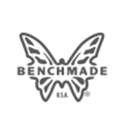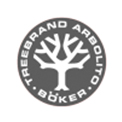A Fair Review of Buck’s Survival Knife Token Entry [Buck Selkirk Review]
11th Oct 2022
For the longest time, Buck has specialized in making hollow-ground bowie-style knives for hunters that look like a mashup of a classic trench knife and a bowie.
Consider the 119 Special, arguably the most infamous hunting knife of all time, the 102 Woodsman, the 105 Pathfinder, the 120 General, and the hefty 124 General.
These Buck knives all have a few things in common, despite the fact that they vary wildly in size. They are all hollow-ground, they all have a clipped point of some sort or other, they all have crossguards or steel bolsteres, and they all have partial tangs that run through synthetic or wooden scales.
This design has served Buck well for generations and suffice it to say sales (and popularity) are still stong.
But the popularity of bushcraft, and by extension, survival and camp knives, have soared. Flat ground, drop point knives with full tangs and synthetic scales have become increasingly popular, in the mode of ESEE and OKC.
So, Buck threw its hat in the ring with a token Buck survival knife, the Selkirk.
Let’s take an honest look at this thing.
Blade Steel
First off, at first look you might think you’re looking at some variation of an ESEE-4; that’s how similar this thing is.
But, the first differentiator is blade steel. The Buck Selkirk is made with Buck’s Classic 420HC steel. To their credit, the heat treat is very good and the blade is unimaginably sharp from the factory.
It is also probably just a tad harder than the 1095 of ESEE and OKC. This is actually a slight bonus because it will hold an edge a bit longer, despite the fact that it will be just a little harder to sharpen.
Also, being 420HC, this stainless steel resists corrosion much better than many other fixed blade knives with high-carbon tool steel blades, like 1095 or D2, so that must be a bonus for some outdoorsmen.
Also, the stout drop point is a nice break from the classic Buck drop point and is unlikely to break or chip even with hard use; and, the flat grind is a nice feature, too, since hollow ground knives tend to “dive” into wood. This would be much better for carving, batoning, and other camp tasks.
Nice Features
This Buck survival knife has a few other nice features besides blade profile and steel. Notably, the scales, which are made from CNC-contoured Micarta, are a nice touch.
This material is denser (and probably tougher) than Buck’s standard phenolic grips, and nicely textured for a solid grip. The nice thing is that, when you look at a side view of the knife, the Micarta handle looks thick, bulky, and likely to roll; but it is not. In fact, it is quite slim and gently swelled in the middle. The grip has no sharp corners, the knife indexes well, and is quite comfortable to hold.
Also nice is the fact that the knife spine is squared, which makes it good for, among other things, scraping sparks from a fire-starter ferro rod or preparing tinder from wood. Enterprising individuals might also have luck using the squared spine to flesh hides, too.

There is very aggressive jimping at the base of the spine that is nearly sharp. Some users might consider this a drawback since this knife is primarily intended for working wood. Jimping is used to provide a sure grip in the presence of blood or grease (such as when cleaning game) so some might not consider this feature necessary.
Another selling point is the flattened pommel, or rear bolster, if you will. Unlike many other survival knives, the pommel at the end of this knife is square to the tang and flat. This makes it useful as a striking implement. Need to crack a nut? Break a rock? Pound a tent stake? That flattened pommel is actually one of the most useful features of this Buck survival knife.
The sheath is also another huge selling point of this fixed-blade knife. In common with many other survival knives, this Buck survival knife has an injection-molded nylon sheath that can be mounted in a variety of configurations - for belt carry, scout carry, cross draw, and more.
Being made of nylon, it’s much more resistant to rot than a leather sheath, and the knife even comes with a whistle and fire starter rod.
So in truth, there’s a lot to love about this Buck survival knife, from corrosion-resistance to the flexible sheath.
And, despite the fact that it is made in China (quality is slightly lower than most American-made Bucks), it offers a much fairer price point than other similar knives from Benchmade, ESEE, and OKC.
So that’s a bonus, too.
Pick Up a New Buck Survival Knife
Hopefully, you found this Buck survival knife review helpful. In addition to the full-size Selkirk, Buck also makes a smaller version of the same knife as well as large and small Selkirk folders.
If you have any questions about any of these, feel free to send us an email at WhiteMountainKnives@gmail.com and we would be glad to help.

![A Fair Review of Buck’s Survival Knife Token Entry [Buck Selkirk Review] A Fair Review of Buck’s Survival Knife Token Entry [Buck Selkirk Review]](https://cdn11.bigcommerce.com/s-fedcb/images/stencil/190x250/uploaded_images/www1.jpg?t=1665483034)







